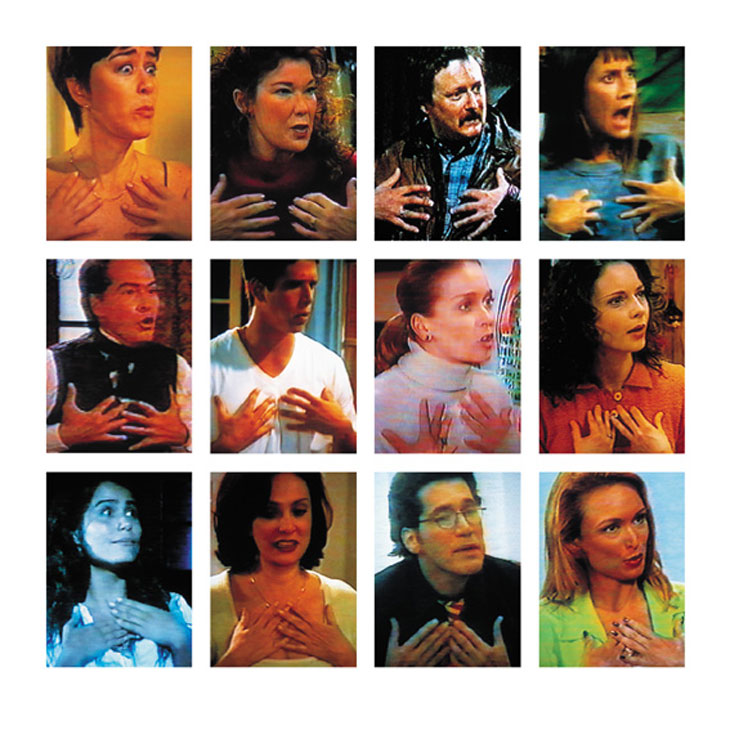
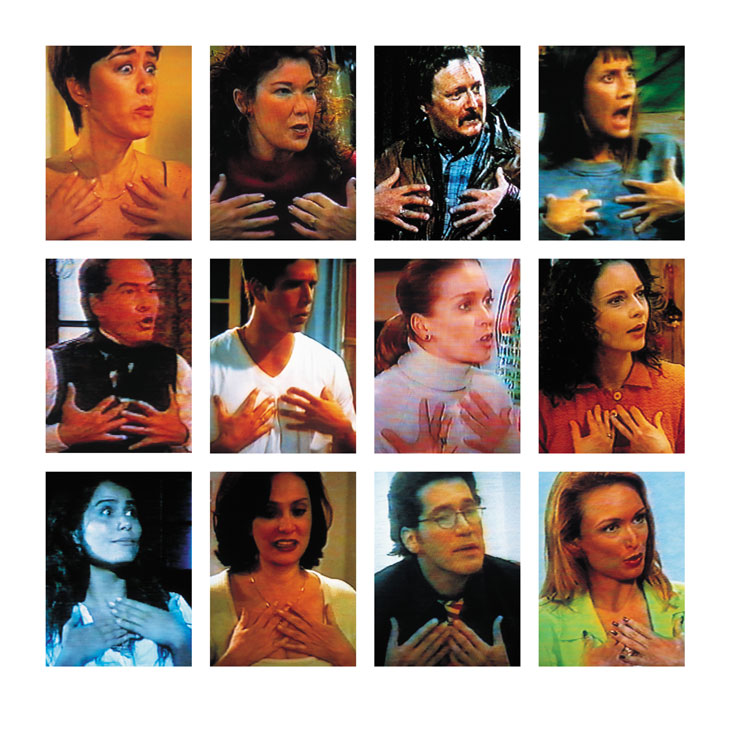
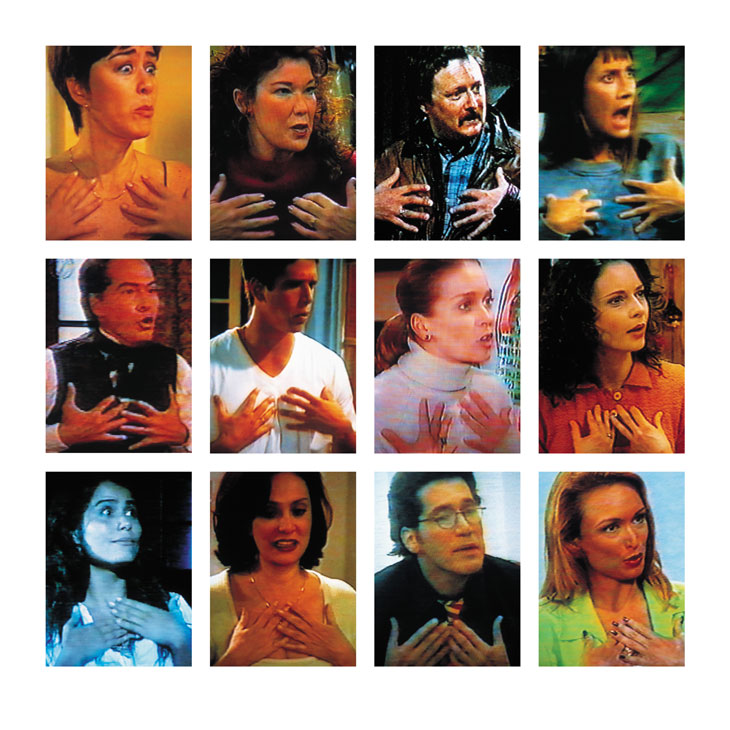
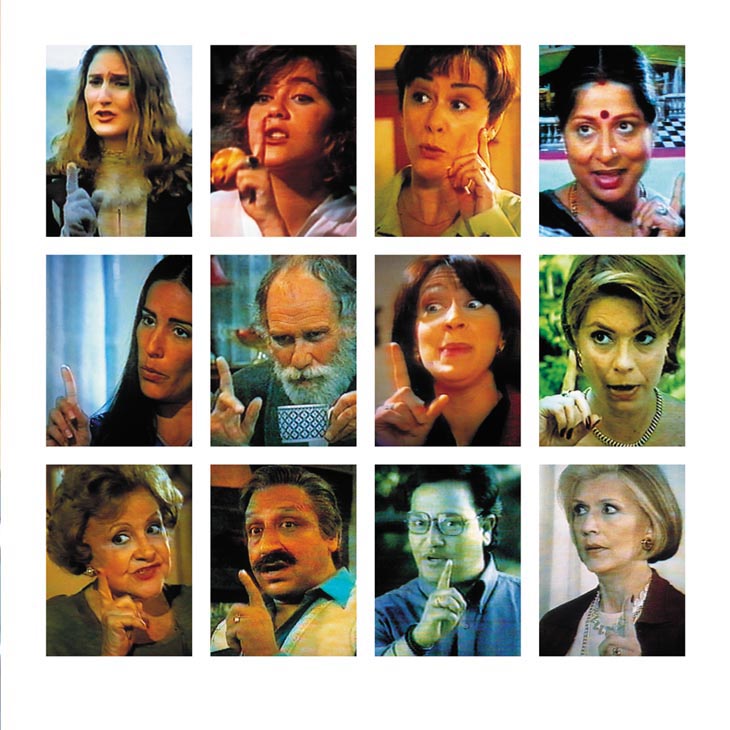
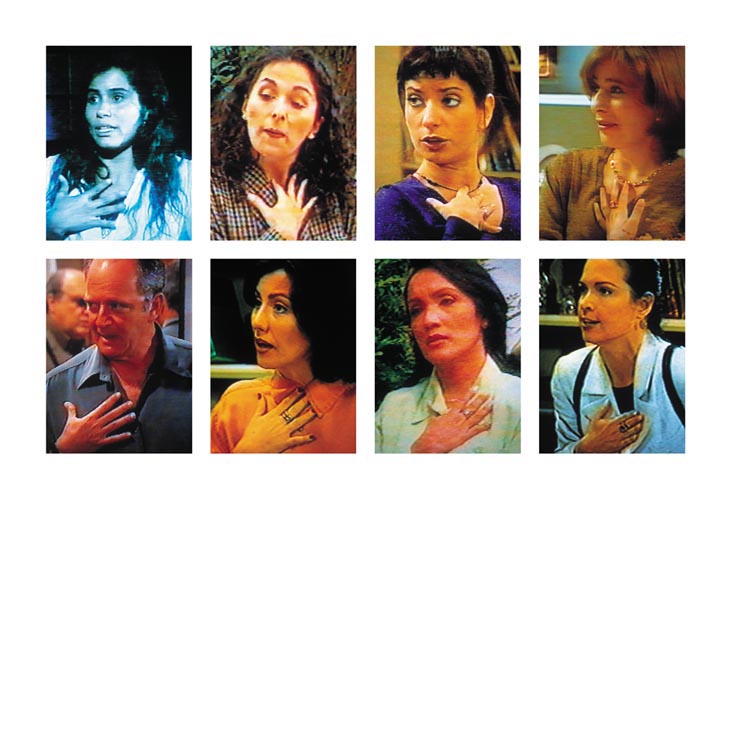
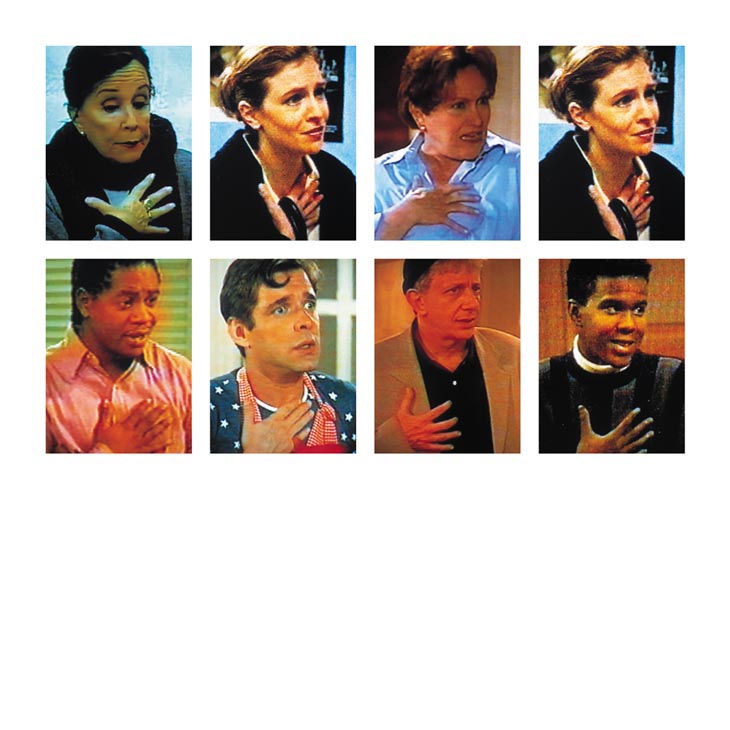
Julian Rosefeldt
Global Soap (2000-2001) was made by sifting through a massive collection of headshot stills taken from a source as contemporary and ubiquitous as reality shows: televised soap operas from around the world. The melodramatic expressions of the performers are ordered according to type, then sampled and re-edited into grid arrangements that form a kind of iconographic study of emotional codes, half real and half illusory, of our time. Rosefeldt’s analysis of the repetitive gestures, facial expressions and situations appearing again and again in the soaps points to the genre’s universal vocabulary and opera-like pace and choreography.
In soaps, roles are polarised into familiar oppositions – the goodies and the baddies, innocence and guilt, victim and perpetrator– which override and overlook specific characteristics of ethnic and national identity. Warburg’s types and formats, his ‘formulas of pathos’, are re-contextualised into the modern age through Rosefeldt’s contemporary imagery, despite its highly contrived context.
Julian Rosefeldt’s work reflects the artist’s fascination with day-to-day reality, and the stereotypes, clichés and mindless repetitions that suffuse popular culture. Since the mid-1990s Rosefeldt has been producing complex film and video installations, as well as photographs, through which we can observe from a cool, detached perspective the formulaic imagery and content that is generated by contemporary media.Rosefeldt has argued that ‘soaps have taken over the function of the church’ and, making an implicit reference to the work of German art historian Aby Warburg and his systematic study of the iconography of religious painting, he terms his distilled arrangements ‘icons of the media age’.





